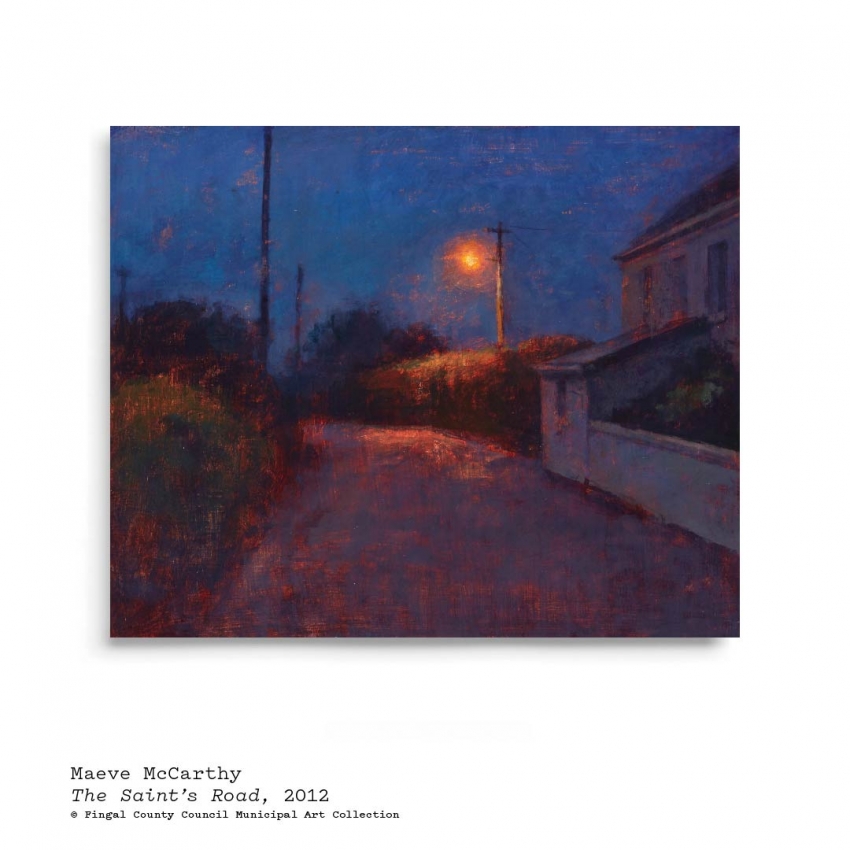
Fingal Municipal Art Collection: Maeve McCarthy, The Saint’s Road, oil on canvas
Maeve McCarthy, The Saint’s Road, oil on canvas
This painting, with little detail visible, is more about an atmosphere than a depiction of a particular place. We see a darkened bend in a road, hugged by hedgerows and a single amber streetlight which casts soft light on a house that spills off the panel to the right. This is one of a series of McCarthy’s night-time paintings or nocturnes depicting the area in West Kerry where St Brendan pushed off from the shore to embark on his epic sea voyage.
What associations might you have with roads where the destination is not visible? Can you guess if this is dusk or just before the dawn? How might you decide? With McCarthy’s dappled pink highlight on the road, might we guess that this place offers her comfort rather than unease? She has nearly filled the front of the image with the road and draws us into it further with her triangular composition. Maeve has worked in film animation. Might we see any filmic or dramatic qualities in this piece? Another artist, Edward Hopper, is very famous for painting scenes like this, often with a single lamppost of lighthouse. It is said that his paintings portray loneliness. Do you think The Saint’s Road might be touching on that idea too?
Does this feel like a painting about beginnings? Endings? In-between states? What kind of adjectives come to mind for you when you look at it? Perhaps the lack of clarity could stir uncertain feelings? Or Is it soothing? Without knowing it is West Kerry, how could we guess we are in a rural setting and not suburban?
***
Activity:
If you might like to try out a similar approach to depicting a scene like The Saint’s Road, try this:
Attach a piece of paper to a window using Sellotape. You might wait until early evening or very early morning when the light is dimmer. Fill your whole page with something dark – use a thick pencil, dark chalk or charcoal.
Once the page is fully covered, use a rubber and your fingers to erase places where you see a source of light – a streetlight, a neighbour’s window, stars, car headlights, the moon. Then using the rubber, similarly rub out areas where the light is touching the scene. Try to exaggerate the lights and darks. In Renaissance painting, this is the effect Caravaggio used – chiaroscuro. To get dramatic lights and darks in an image like McCarthy’s, we would use the rubber on the hedges, the bend of the road and edges of the house, allowing the spot where the light is brightest, to be rubbed clean. You can further add to the lightness of the lightest area by dabbing that spot with a fingertip dipped in cooking oil – this will make the paper nearly transparent at that point and will cause a halo effect to the darkened area around the treated spot.